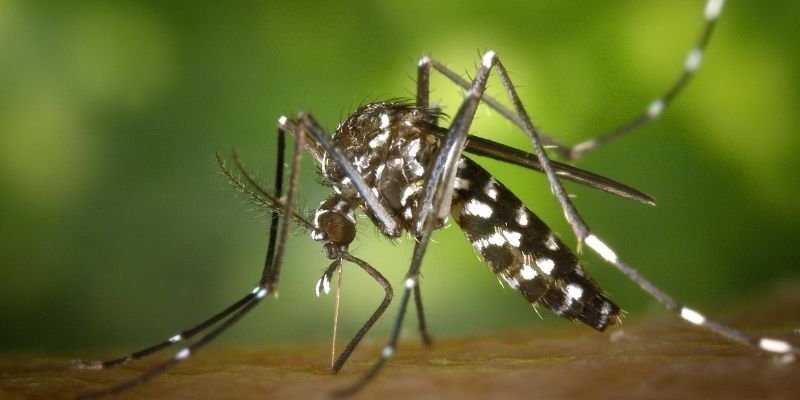The Sore Throat Checklist: What Parents Need to Know for Quick Relief
Children with a sore throat may be restless and uncomfortable, worrying their parents about what to do next. Is it only a little annoyance or something more severe? Understanding the indicators, causes, and treatments guarantees rapid relief. A sore throat checklist guides parents in managing symptoms at home and choosing when to visit a doctor.
Knowing viral and bacterial infections is essential since some require basic treatment while others call for professional help. Common causes, symptoms, and cures are covered in this article. It also shows when professional assistance is required. While preventing complications, quick action helps youngsters feel better faster. Let's go over the basic checklist to help parents make wise decisions for their children's health by managing sore throats in them.

Causes of a Sore Throat
One can have a painful throat for several reasons. Some are moderate; others require therapy.
- Viral Infections: Common colds and flu are among the viruses causing most sore throats. Other viruses, including COVID-19, can also cause throat trouble. Viruses do not require antibiotics. Rest and drinks can then help reduce pain.
- Bacterial Infections: Streptococcus bacteria cause strep throat, which calls for antibiotics. The symptoms include a high temperature, swollen glands, and white throat patches. A strep test should let a doctor confirm the infection.
- Allergies: Pollen, dust, and pet dander can set off allergy reactions, which can lead to sneezing, a runny nose, and throat irritation. Antihistamines aid with symptoms.
- Dry Air: Air dryness brought on by heating and air conditioning irritates the throat. A humidifier moistens the throat and helps to ease congestion.
- Irritants: Strong smells, smoke, pollution, and toxins can all aggravate throat problems. Keeping children free from irritants helps to avoid throat problems.
Symptoms to Watch for
A sore throat can cause anything from slight discomfort to more major problems. A scratchy or itchy throat, runny nose, nasal congestion, a mild cough, and a minor fever constitute the mild symptoms. Usually, these go away with rest, honey, and warm fluids at home. Some symptoms, meanwhile, point to a more major problem. A bacterial infection or other medical problem may be indicated by a high fever over 101°F, extreme throat discomfort making swallowing difficult, swollen tonsils with white patches, ear pain, swollen glands, rash, or joint pain.
One should see a doctor for appropriate assessment and treatment if these symptoms arise. Understanding the variations between mild and severe symptoms enables parents to act fast to guarantee their child receives appropriate treatment. Though most sore throats go away independently, severe symptoms call for medical intervention to avoid problems. Children who monitor their symptoms will heal faster.
Home Remedies for Quick Relief
Most sore throats pass by themselves. These household treatments quickly help with symptoms.
- Warm Fluids: Warm water, herbal tea, or broth eases pain and calms the throat. For safety, avoid quite hot beverages.
- Honey and Lemon: Honey and lemon together reduce inflammation and throat pain. It also helps the cough to be calmed and promotes natural healing.
- Saltwater Gargle: Gargling warm seawater three times daily relaxes soreness, reduces throat swelling, and kills bacteria.
- Humidifier Use: A humidifier helps children breathe more easily and prevents extra throat inflammation by adding moisture to dry air.
- Rest and Hydration: Many rest and drink water to help the body heal faster by moistening the throat and reducing irritation.
- Cold Treats: Cold foods like yogurt, ice cream, or popsicles reduce throat irritation by momentarily easing it and reducing discomfort.
- Over-the-Counter Medicine: Treats for sore throat and fever include ibuprofen or acetaminophen. Always use proper dosage recommendations based on the child's age.
When to See a Doctor
Certain sore throats need medical attention; parents should know when to call a doctor. If a sore throat persists for over a week without relief, it could indicate a more severe illness requiring examination. A main warning indication is difficulty swallowing or breathing, which could indicate a severe illness or throat swelling that calls for quick medical attention. Together with enlarged lymph nodes, a high fever exceeding 101°F usually points to a bacterial illness like strep throat, which would call for antibiotics.
A rash accompanying a sore throat could also point to scarlet fever or another treatable underlying condition. Joint pain is another alarming indication that should not be disregarded. If home remedies, including humidifiers, honey, or warm drinks, fail to offer comfort, a doctor must evaluate the reason and suitable course of action. Identifying these warning signals guarantees timely medical treatment and helps to avoid consequences.

Preventing Sore Throats
Parents can act to lower their children's likelihood of sore throats.
- Handwashing: Frequent hand washing with soap efficiently eliminates germs, thereby preventing the spread of viruses and bacteria and lowering the danger of infections that can cause children's sore throats and other diseases.
- Avoiding Sick People: Reducing contact with sick people helps prevent the transmission of contagious diseases and lowers the possibility of children getting sore throats or other diseases that could compromise their immune system and general condition.
- Using a humidifier: Moisture the air, keeping their airways pleasant and healthy; a humidifier delivers, minimizing dryness and throat irritation and lowering the possibility of sore throats in young children.
- Hydration: Drinking enough water keeps the throat moist, flushes out toxins, and boosts immunity. It helps prevent infections that cause sore throats and keeps youngsters healthy and hydrated.
- Healthy Diet: A good diet high in vitamins, minerals, fruits, and vegetables boosts immunity, increasing children's resistance to diseases causing sore throats.
Conclusion:
Children commonly have sore throats, which usually go away on their own. To offer fast relief, parents should identify the causes and symptoms. Warm fluids, honey, and humidifiers are among the home remedies that help with discomfort. But a high temperature, swollen glands, or trouble swallowing could call for medical attention. Good cleanliness, a balanced diet, and enough water help lower illnesses; prevention is vital. Faster healing depends on tracking symptoms and acting quickly. Children can feel better fast with proper care and attention. To safeguard the health of your child, always remain vigilant and, when needed, seek medical attention.











